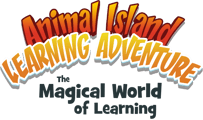“Early math skills have the greatest predictive power, followed by reading and then attention skills.” (“School Readiness and Later Achievement,” from Developmental Psychology)
Children begin to notice numbers at a very early age, specifically a sensitivity to the concept of quantity. By building on this early, children can be encouraged to develop a recognition of numbers.
Recognition of numbers leads to the development of other number skills such as counting. While many children early on can “rote” count, “rote” counting does not indicate an understanding of “how many” in a group. Furthermore, recognition of numbers leads to the ability of a child to immediately recognize how many in a group without counting each one. This ability leads ultimately to addition.
Numeracy, on the other hand, is the ability to apply basic math concepts to everyday life. Numeracy begins with a child’s ability to count – fingers, toes, toys, etc. – moves on to the ability to recognize numbers and shapes on objects such as clocks, and extends to when children can express how many cookies they want. These foundational abilities will help a child solve problems, analyze information, understand patterns, and make appropriate choices.
